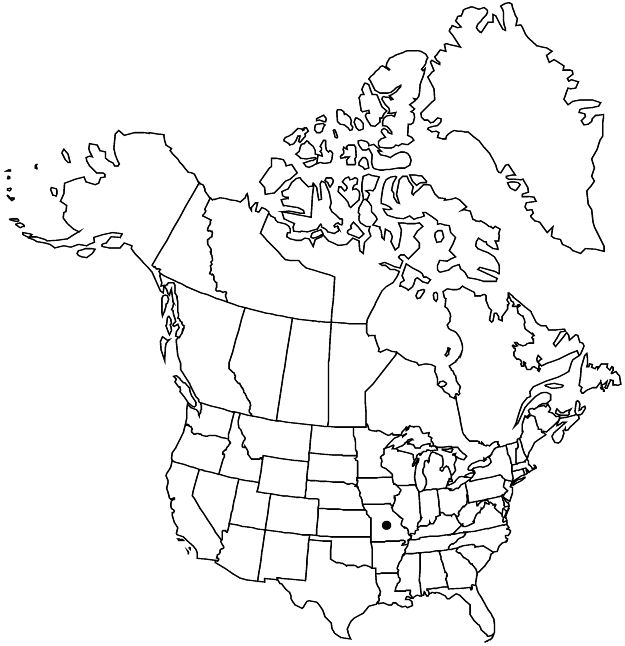Crataegus ×dispessa
J. Elisha Mitchell Sci. Soc. 19: 17. 1903.
Trees, 55 dm. Stems: twigs: new growth canescent, 1-year old dark-brown, older gray; thorns on twigs absent or few, straight or slightly curved, 1-year old dark purple, 3 cm. Leaves deciduous; petiole slender, length 33–43% blade, distally winged, densely pubescent, eglandular; blade elliptic to suborbiculate, 3–7 cm, base cuneate, lobes 0 or 1–3 per side, apiculi, margins sharply serrate, venation craspedodromous, veins 5 per side, sharply impressed, apex acute, surfaces glabrate, glabrescent, abaxial veins densely pubescent, adaxial appressed-pubescent young. Inflorescences 10–20-flowered; branches tomentose; bracteoles caducous, numerous, linear, ± membranous, margins glandular. Flowers 20–25 mm diam.; hypanthium canescent; sepals narrowly triangular, margins glandular-serrate to glandular-laciniate, abaxial surface densely pubescent; stamens 20, anthers cream, sometimes pink; styles 4 or 5. Pomes crimson, suborbicular, 12–17 mm diam., pubescent; sepals erose or patent; pyrenes 4 or 5, dorsally grooved, sides plane.
Phenology: Flowering May; fruiting Sep–Oct.
Habitat: Brush, along streams and woodland margins
Elevation: 100–200 m
Discussion
Crataegus ×dispessa is found in southern Missouri to Boone County and was last collected in Dallas County.
Crataegus ×dispessa is probably of ser. Molles × C. collina var. hirtiflora parentage, the bracteole type not being characteristic of ser. Molles.
Selected References
None.
Lower Taxa
"thin" is not a number."winged" is not a number."adnate" is not a number.
